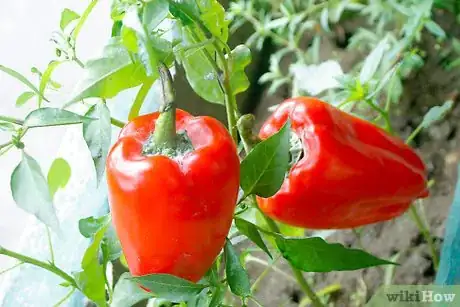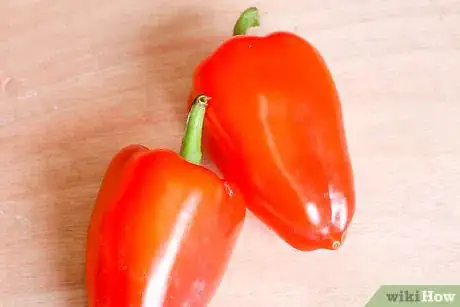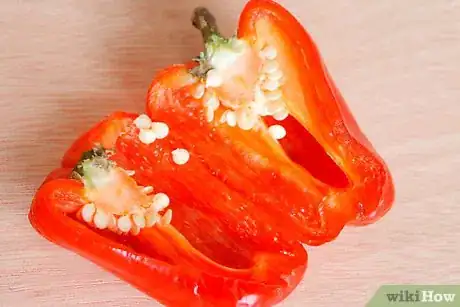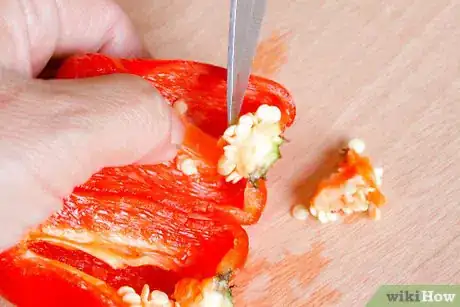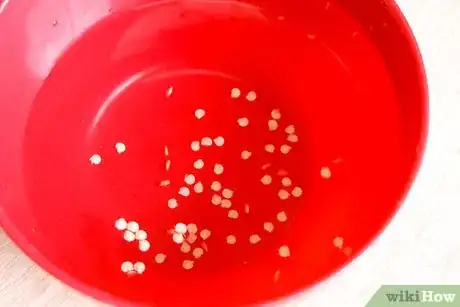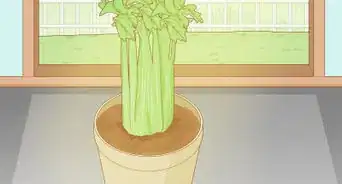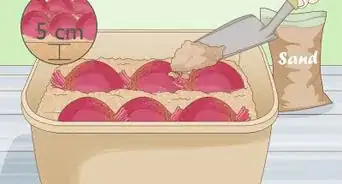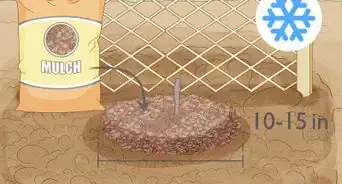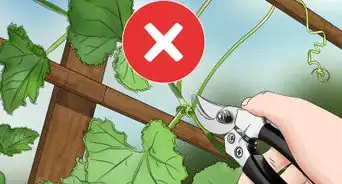X
wikiHow is a “wiki,” similar to Wikipedia, which means that many of our articles are co-written by multiple authors. To create this article, volunteer authors worked to edit and improve it over time.
This article has been viewed 34,601 times.
Learn more...
If you're a keen gardener and you'd like to keep the heritage of your bell pepper (Capsicum spp.) crop, you can do this by preserving the seeds. You'll need to select the healthiest plants, check that the seeds are viable and store them properly. Each of these elements is explained in the following steps.
Steps
Part 1
Part 1 of 2:
Harvesting the seeds
-
1Choose healthy plants to source the seeds from. You'll want to pass on the best possible traits for the next bell pepper crop, so only select the plants that are growing well and are in good health.[1]
- Signs of a healthy plant include good growth; ability to cope with hot, cold, wet and cool climates; well-formed fruits; uniform growth; supple branches; thick walls on the fruits; good flavor.
-
2Select the seeds from the first fruits produced on the bell pepper (capsicum) plant. The reason for this is that the germination rate for seeds from later fruits drops to around 60 percent.[2]Advertisement
-
3Harvest the seeds from ripe fruits only. This is when the seeds are ready. The bell pepper is ripe when it has changed from green to red or yellow or from light yellow to dark yellow or orange. The seeds will appear a golden yellow color; if they are still white, then they're not ready for preserving.[3]
- If the fruit has dried on the stalk, the seeds can be harvested from this too.
Advertisement
Part 2
Part 2 of 2:
Preserving the seeds
-
1Remove the seeds from the flesh of the fruit. Do this either using your fingers to run along the flesh and pull the seeds away or by scooping them out with a small spoon.[4]
-
2Sort out any flesh or other matter than isn't seeds. Place already removed seeds on a plate or tray as you work on removing more seeds from the flesh.[5]
- You will likely get around 200 seeds per bell pepper.
-
3Check which seeds will germinate and which won't. There is a simple test using water that will enable you to remove the seeds that probably won't germinate:
- Place all of the seeds into a small container filled with water.
- The seeds that won't germinate (non-viable) will float to the top. The seeds left at the bottom will likely germinate.
- Pour the non-viable seeds off, carefully keeping the viable ones at the base of the container.
-
4Dry the viable bell pepper seeds. Spread the seeds out onto a suitable surface for drying. A screen or mesh make ideal drying surfaces, as the air can flow both sides of the seed. Put the drying seeds somewhere warm, such as in the sun or on a sunny windowsill.[6]
-
5Dry well. You can check when the seeds are properly dry by breaking one or two open. If the seed makes a cracking sound when broken open, it is sufficiently dried.
-
6Transfer the seeds to storage. Place in an airtight bag and store in a cool, dark place. Label the bag so that you remember when the seeds were harvested.[7]
-
7Plant the harvested seeds next growing season. Repeat the process of saving the seeds for each consecutive crop, always focusing on the healthiest plants.[8]
Advertisement
Community Q&A
-
QuestionDo seeds need to be dried before planting or can you take fresh undried seeds and plant them? Or, will germination be at a lower success rate?
 Community AnswerGermination will be about the same. It is better to dry them though. Germination with wet seeds works better.
Community AnswerGermination will be about the same. It is better to dry them though. Germination with wet seeds works better.
Advertisement
References
- ↑ https://www.latimes.com/food/la-fo-bell-peppers-s-story.html
- ↑ Andrea Heistinger, The Manual of Seed Saving
- ↑ https://extension.umn.edu/planting-and-growing-guides/saving-vegetable-seeds
- ↑ https://www.youtube.com/watch?v=3RtAl-fgEQE
- ↑ https://www.youtube.com/watch?v=3RtAl-fgEQE
- ↑ https://gardenerspath.com/plants/vegetables/growing-using-bell-peppers/
- ↑ https://gardenerspath.com/plants/vegetables/growing-using-bell-peppers/
- ↑ https://gardenerspath.com/plants/vegetables/growing-using-bell-peppers/
- Andrea Heistinger, The Manual of Seed Saving, (2010), ISBN 978-1-60469-382-9 – research source
About This Article
Advertisement
